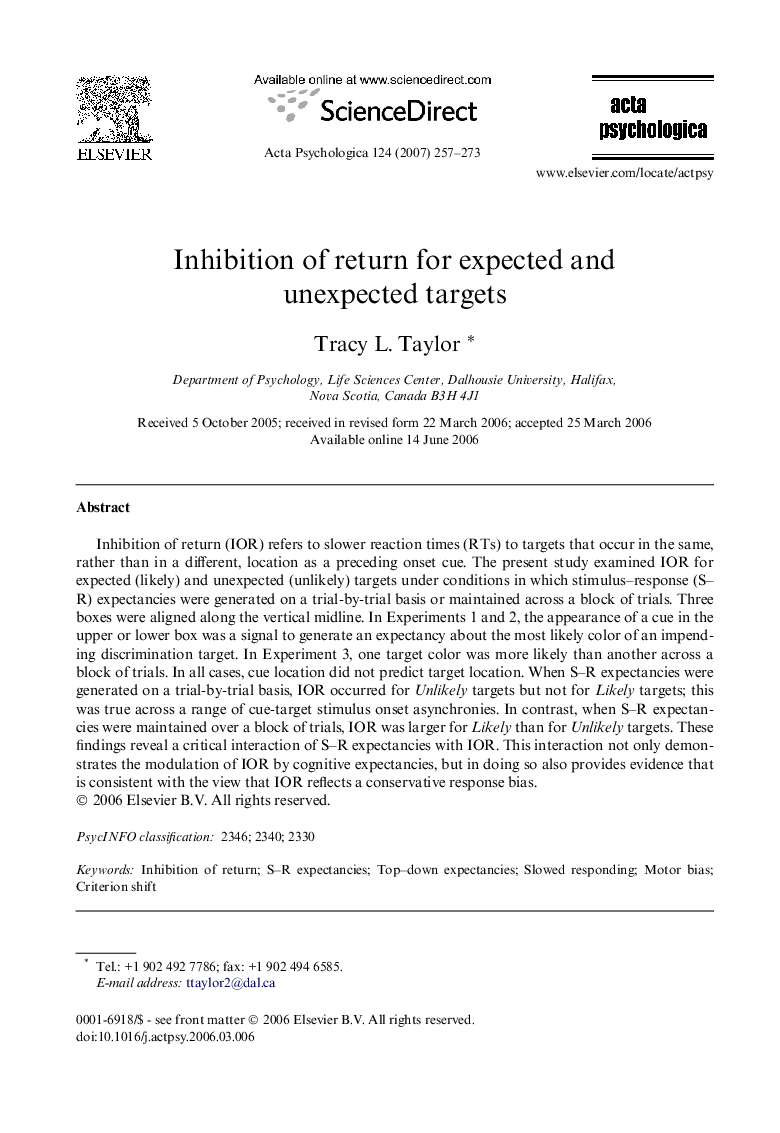| Article ID | Journal | Published Year | Pages | File Type |
|---|---|---|---|---|
| 920619 | Acta Psychologica | 2007 | 17 Pages |
Inhibition of return (IOR) refers to slower reaction times (RTs) to targets that occur in the same, rather than in a different, location as a preceding onset cue. The present study examined IOR for expected (likely) and unexpected (unlikely) targets under conditions in which stimulus–response (S–R) expectancies were generated on a trial-by-trial basis or maintained across a block of trials. Three boxes were aligned along the vertical midline. In Experiments 1 and 2, the appearance of a cue in the upper or lower box was a signal to generate an expectancy about the most likely color of an impending discrimination target. In Experiment 3, one target color was more likely than another across a block of trials. In all cases, cue location did not predict target location. When S–R expectancies were generated on a trial-by-trial basis, IOR occurred for Unlikely targets but not for Likely targets; this was true across a range of cue-target stimulus onset asynchronies. In contrast, when S–R expectancies were maintained over a block of trials, IOR was larger for Likely than for Unlikely targets. These findings reveal a critical interaction of S–R expectancies with IOR. This interaction not only demonstrates the modulation of IOR by cognitive expectancies, but in doing so also provides evidence that is consistent with the view that IOR reflects a conservative response bias.
